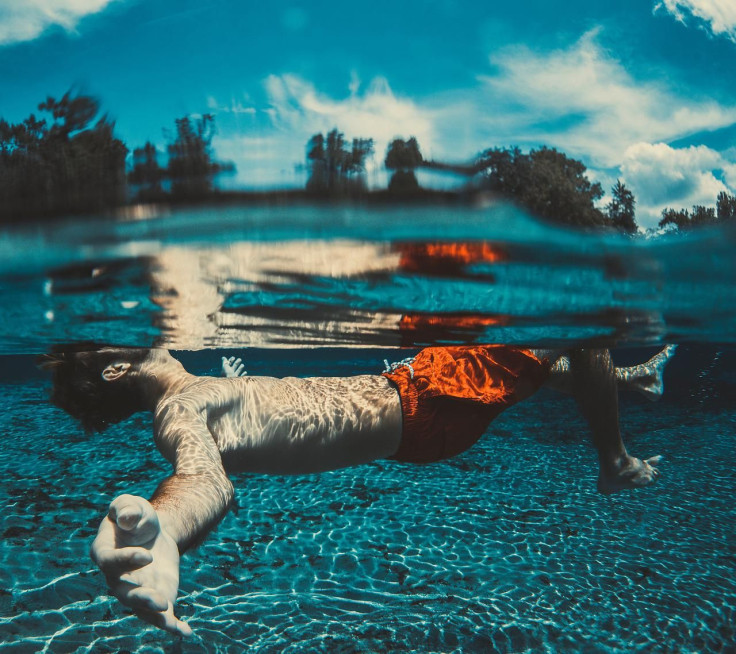What Is Swimming-Induced Pulmonary Edema? Researchers Warn Of 'Under-Reported' Condition
KEY POINTS
- SIPE was first reported decades ago but it still remains 'under-reported'
- It involves accumulation of fluid in the lungs "in the absence of water aspiration" during swimming
- The chance of recurrence is said to be common
Love open-water swimming? Then you should definitely be aware of an "under-reported" condition associated with the activity.
In a report, published in BMJ Case Reports, doctors described the case of a "fit and well" woman who experienced a swimming-related hazard that perhaps not many open-water swimming enthusiasts are aware of.
Swimming-induced pulmonary edema (SIPE) is a subtype of immersion pulmonary edema (IPE) that's characterized by the accumulation of fluid in the lungs "in the absence of water aspiration during swimming," the researchers explained. In other words, the lungs get filled up with water even if it's not inhaled.
The condition was first reported way back in 1989, but it remained "under-reported" with incidence rates between 1.1% and 1.8%. Researchers say there is "a growing body of evidence of an association" between open-water swimming and SIPE.
"Risk factors for the development of SIPE include advanced age, female sex, hypertension, long course distances, cooler water temperature, and pre-existing heart disease," the researchers wrote.
It also "frequently occurs" in people considered "fit and healthy." The condition is likely caused by the increased pressure from the exertion and immersion in cold temperatures.
The woman in the latest case report was 50 years old and had no notable past medical history. She was a "keen competitive long-distance swimmer and triathlete." She started experiencing symptoms after open-water swimming at 17-degree Celsius (62.6 degrees Fahrenheit) water.
The woman said she started hyperventilating and realized that she "couldn't swim any further" during a night swim. Fortunately, she was able to call for help.
"When I got out, I undid my wetsuit and immediately felt the sensation of my lungs filling with fluid. I started to cough and had a metallic taste in my mouth," she said. "I was very lucky to be surrounded by a great team at the quarry who all knew I had SIPE."
The woman was taken to an emergency room. Tests revealed she had a case of IPE with fluid accumulation in her heart muscle.
"To the best of our knowledge, this is the first published evidence of myocardial oedema characterized using MRI in the setting of IPE," the research team wrote.
It's possible that pre-existing myocarditis may have contributed to the condition, though it may have also been an acute episode, the researchers said, noting that the woman got a COVID-19 vaccine booster just six hours prior to the swim. However, they said it's "unrelated" to the incident.
Dr. Peter Wilmshurst, the person who first described IPE in the 1980s, agreed with it, saying it was unlikely that the woman experienced the condition because of the vaccination, reported The Guardian. Wilmshurst was not part of the team that prepared the latest report.
The woman's symptoms reportedly cleared some two hours after arriving at the hospital, according to The BMJ. She was discharged the next morning. She "remains well" though she has been "advised regarding precautions" if she wants to keep on swimming in open water.
She has had no other symptoms and is "back to full training."
The condition may not be as rare as people think, Wilmshurst said, noting that one in 20 men report it during the selection for the Navy Seals and one in 200 participants of Sweden's annual Vansbro Swim — the "second largest race in the world," suffer from it.
So far, there are "no formal national medical guidelines concerning the recognition and management of this complex condition," the researchers said. For now, experts advise swimmers to be more aware of the symptoms and avoid going open-water swimming alone. Those who experience symptoms should immediately get out of the water and seek medical attention, Dr. Doug Watts, a specialist in diving medicine, told The Guardian.
Also, it may not a one-time episode, as recurrence is said to be quite "common." Among swimmers and scuba divers, for instance, the rates are 13% to 22% — something that people who have experienced it should keep in mind.

© Copyright IBTimes 2025. All rights reserved.






















